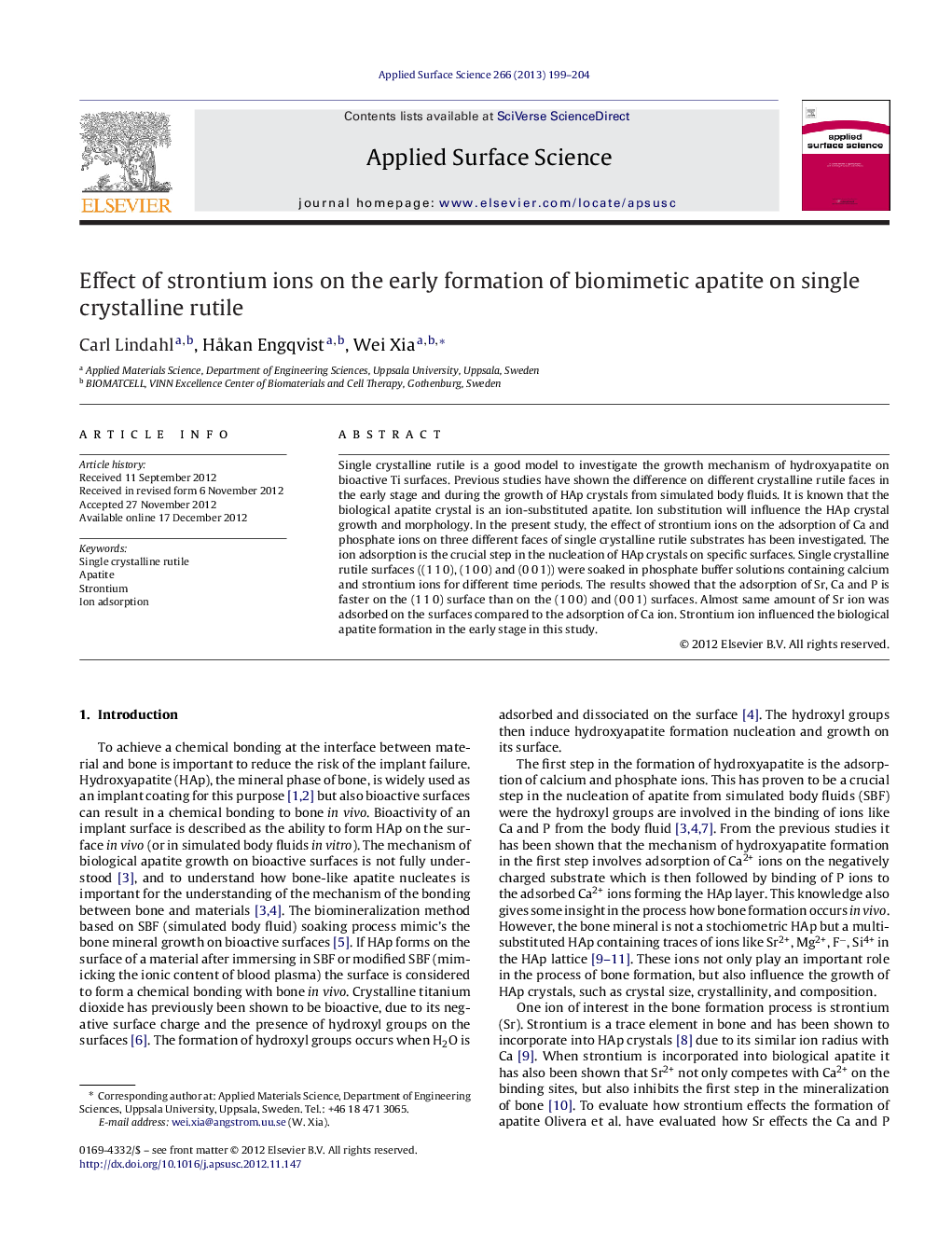| Article ID | Journal | Published Year | Pages | File Type |
|---|---|---|---|---|
| 5363843 | Applied Surface Science | 2013 | 6 Pages |
Single crystalline rutile is a good model to investigate the growth mechanism of hydroxyapatite on bioactive Ti surfaces. Previous studies have shown the difference on different crystalline rutile faces in the early stage and during the growth of HAp crystals from simulated body fluids. It is known that the biological apatite crystal is an ion-substituted apatite. Ion substitution will influence the HAp crystal growth and morphology. In the present study, the effect of strontium ions on the adsorption of Ca and phosphate ions on three different faces of single crystalline rutile substrates has been investigated. The ion adsorption is the crucial step in the nucleation of HAp crystals on specific surfaces. Single crystalline rutile surfaces ((1Â 1Â 0), (1Â 0Â 0) and (0Â 0Â 1)) were soaked in phosphate buffer solutions containing calcium and strontium ions for different time periods. The results showed that the adsorption of Sr, Ca and P is faster on the (1Â 1Â 0) surface than on the (1Â 0Â 0) and (0Â 0Â 1) surfaces. Almost same amount of Sr ion was adsorbed on the surfaces compared to the adsorption of Ca ion. Strontium ion influenced the biological apatite formation in the early stage in this study.
⺠Sr ion influences the early apatite formation. ⺠Adsorption rate of ions on different crystal faces is different. ⺠Adsorption of Sr ion on the surfaces was almost as fast as the adsorption of Ca ion.
